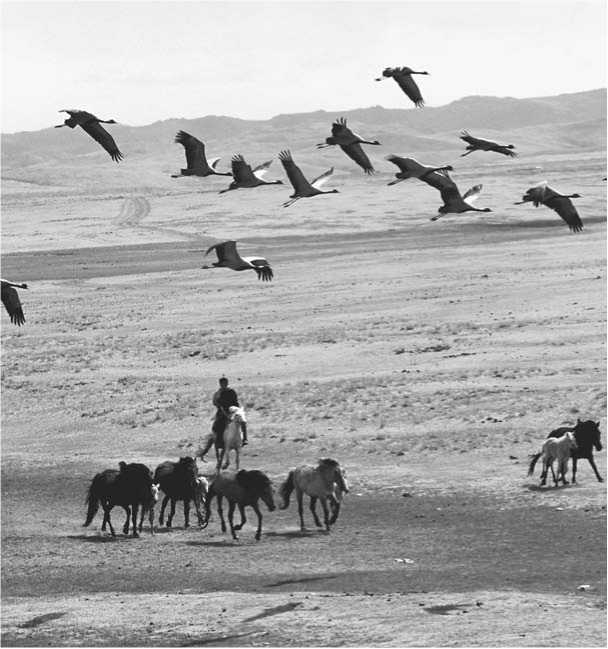Before the rise of the Mongols, other steppe peoples created their own empires in central Asia. The Turks controlled a large part of the region in the sixth and seventh centuries. The Turks called their ruler kaghan, which
Later became khan. According to historian J. J. Saunders, author of The History of the Mongol Conquests, the Turks were notable for being the first “barbarian” nomads to create a unified empire in the steppes. To the sedentary people of the world, the nomads were barbarians because they lacked education, formal governments, and fine arts. The Turks were also “the first barbarians to create a kingdom so extensive as to touch at different points the four great civilized societies of the day: China, India, Persia, and Byzantium,” according to Saunders. (Byzantium was the remains of the eastern half of the earlier Roman Empire.) The Mongols would later repeat that feat, with the borders of their empire stretching far beyond the first great Turkic state.
After the Turkic empire collapsed during the middle of the eighth century, a Turkic people called the Uighurs emerged as the central power. Their capital was near the site of the future Mongol capital of Karakorum. The Uighurs later shaped Mongol culture: Their alphabet was used to write Mongolian, and the Uighurs developed political structures that the Mongols copied.
The tribes of Mongolia next came under the control of the Kitans, who rose to power during the early 10th century. The Kitans were nomads and spoke a language that was related to Mongolian. Coming from the north, the
Kitans also took over part of China,
CONNECTIONS >>>>>>>>>>>>
And they introduced some elements of Chinese culture to the Mongols.
Early Asian Invaders
The Turks of the seventh century were following an old tradition of nomadic warriors coming into contact with more civilized peoples to the west. In the fifth century, the Huns rode across the steppes and attacked parts of the crumbling Roman Empire. Many historians believe the Huns were descendants of the Xiongnu, a people who first lived in Mongolia. The most famous Hun in European history is Attila, who led an invading force that reached Paris. The name Attila the Hun is still used today to refer to someone who is especially brutal, and the country Hungary gets its name from the Huns, who once lived there.
In 1115, the Jurchen rebelled against the Kitans. The Jurchen were a branch of the Manchu people, which lived in northeastern China. They were farmers like the Chinese, but rode horses and raised livestock like the Mongols. Their language was much influenced by the Mongols, as well. The rebellion went on for several years, and around 1120, the Kitans fell to the Jurchen, although some Kitans fled to the west and founded a new empire, Kara-Kitay, based in Transox-iana. As the new rulers of northern China, the Jurchen founded the Jin
Dynasty. When the Jurchen overthrew the Kitan rulers, the Mongols broke away. This decision led to the rise of independent chieftains within Mongolia, but they still recognized the Jurchen as their ultimate rulers.





 World History
World History









